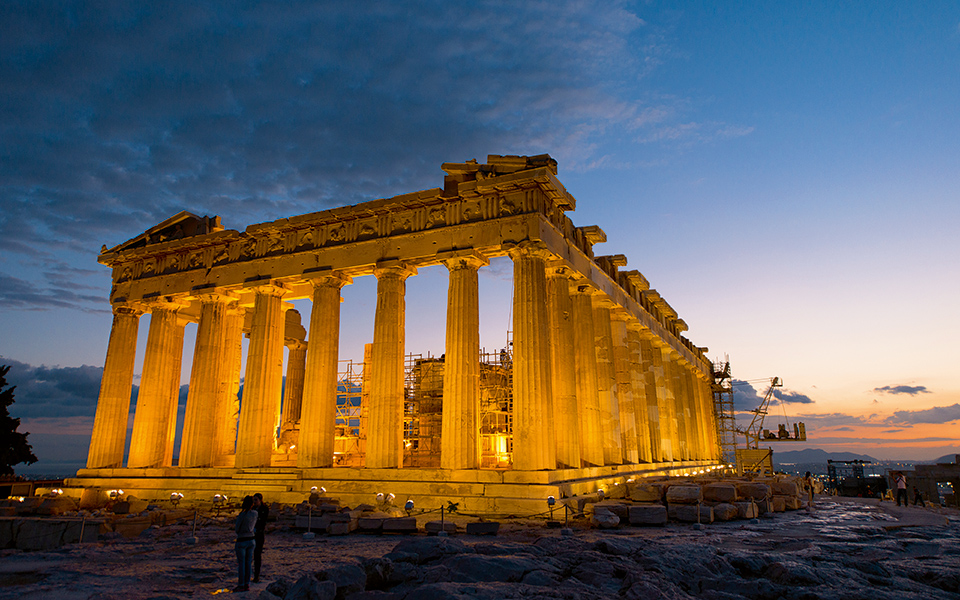
AN ICONIC ACHIEVEMENT
The Parthenon represents the crowning achievement of the classical athenian democracy. Its architects are considered to have been Iktinos and Kallikrates, while the sculptor Pheidias also played a key role in its design. Along with his students, the famous artist created the full panoply of the temple’s exterior sculptural decoration, as well as the enormous statue of Athena Parthenos sheltered within its cella. Building of the Parthenon’s structure was launched in 447 BC and completed in 438 BC. Additional work continued until 432 BC, however, when the last of the temple’s sculptural decoration was installed. The harmony displayed in the dimensions of the Parthenon’s surfaces and volumes, the ingenious artistry behind its decorative sculpture and its masterful overall execution reflect an extraordinary level of political, cultural and artistic development.
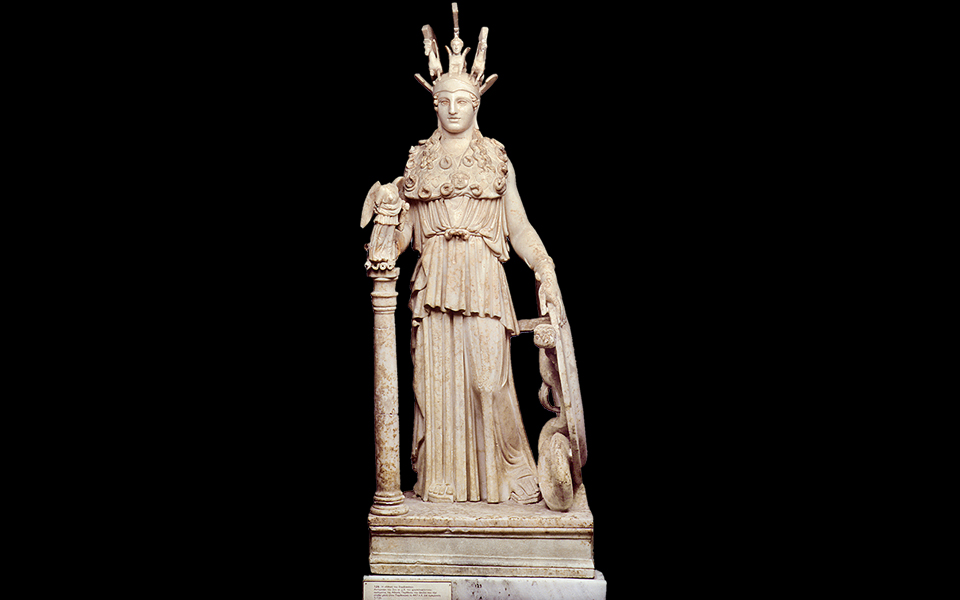
THE MAGNUM OPUS
The Varvakeion Athena, a Roman copy of the Parthenon’s illustrious gold and ivory statue of Athena Parthenos (first half of the 3rd century AD, National Archaeological Museum). Pheidias’ original work consisted of a wooden core covered with ivory and gold. The golden plates altogether weighed about 1,140 kilos and were skillfully arranged to be removable. Thus, when Pheidias was later accused of stealing a portion of the gold, the plates were dismantled, weighed and Pheidias’ innocence was proven.
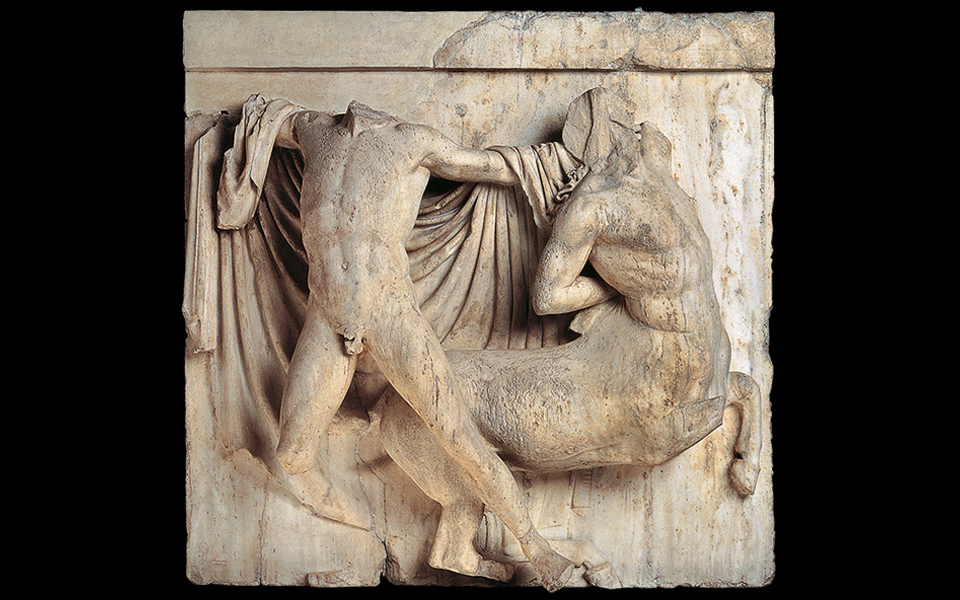
IN PRAISE OF THE ATHENIAN DEMOCRACY
Battle between a Centaur and Lapith: Metope 27 from the south side of the Parthenon (British Museum, London). On the Parthenon’s metopes are depicted mythical confrontations between Greeks and Trojans, Greeks and Amazons, Centaurs and Lapiths and Olympian gods and Giants. These contests are evoked as parallels to the recently concluded struggle between the Greeks and the Persians, and the ongoing human battle between Good and Evil. Essentially, then, the carved scenes praised the excellence of the Athenian democracy — in response to those who might question or conspire against it.
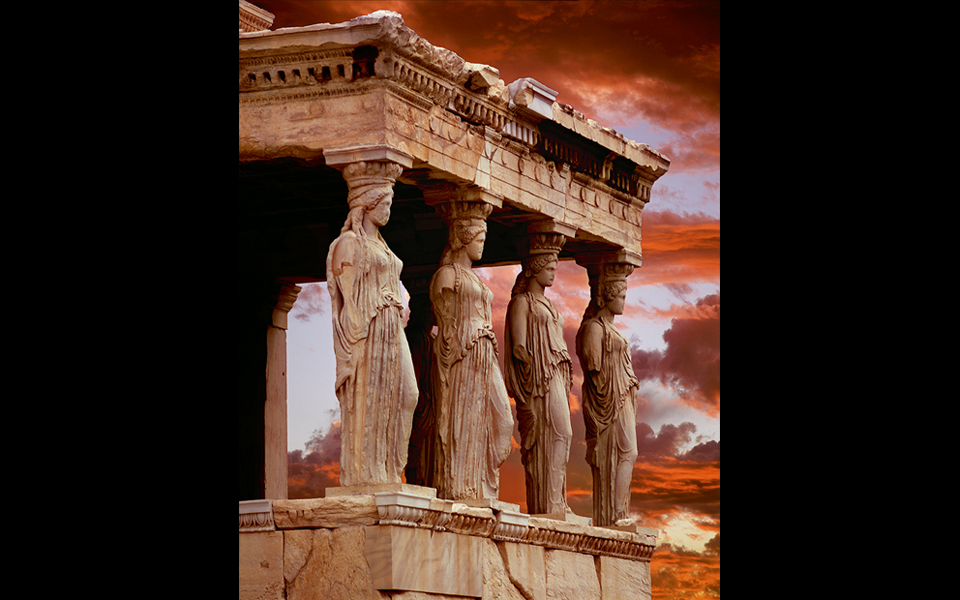
BEAUTY AND STRENGTH
Caryatids were architectural sculptures employed in lieu of columns to support the entablature of buildings. The most famous are the six marble maidens (korai) that supported the porch on the south side of the Erechtheion. On their heads, their thick hair carved in elaborate braids, they carry
a marble, basket-shaped capital. They are dressed in a Doric peplos and support their weight mainly on one leg, with the other slightly bent. The bent leg and the folds in the drapery have been interpreted as indications that the Caryatids are moving in a ritualistic procession (ca. 415 BC, originals in the Acropolis Museum).
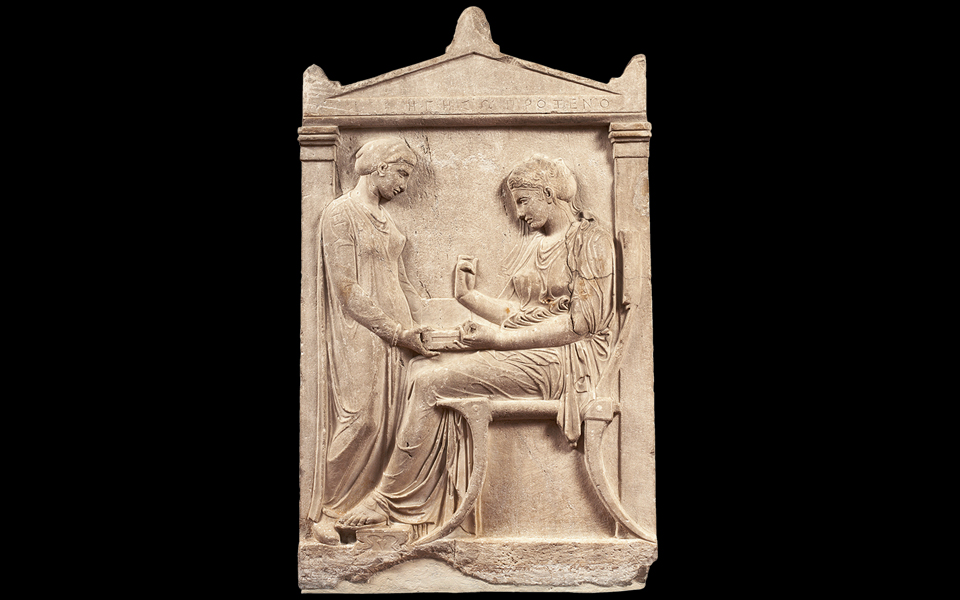
ETHEREAL SADNESS
The well-known grave stele of Hegeso of Proxenos, from the Kerameikos Cemetery. Hegeso, seated and sorrowful, examines an item, probably jewelry, which she holds in her hand, taken from a box presented by a maid standing in front of her. The carved relief has been attributed to Kallimachos, a pupil of Pheidias, famous for his exquisite forms, or to some other member of his artistic circle. Such stelai were commonly used for grave markers and first appeared in Greece during the Mycenaean era (410-400 BC, National Archaeological Museum).
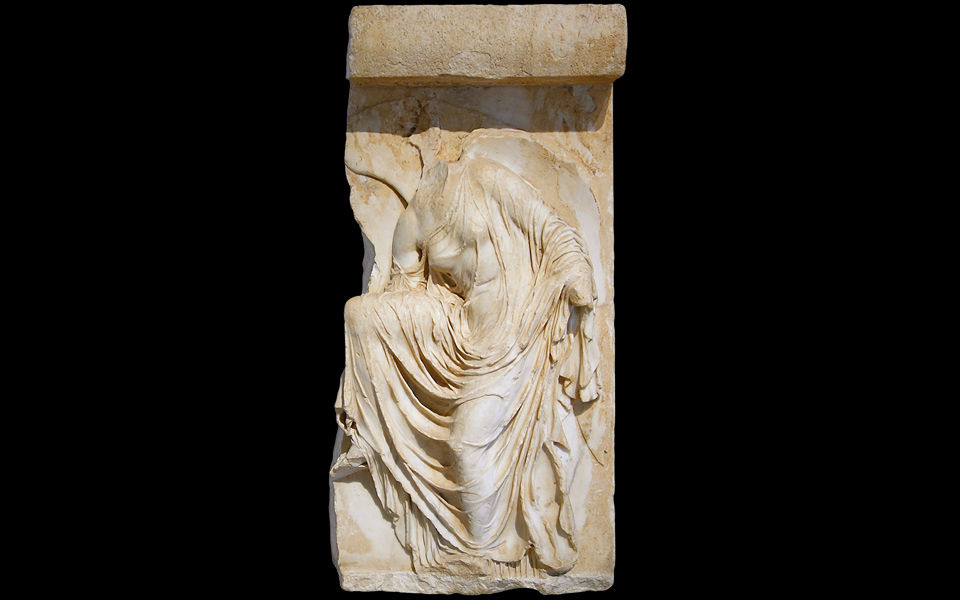
DEXTERITY AND IMAGINATION
“The most perfect creation of Greek art,” as Théophile Gautier describes the famous Nike unbinding her sandal (Sandalizomene). This carved relief depicts Nike (Victory), balancing on her left leg, raising her right and bending to unfasten her sandal before ascending to the altar. The draping of her robe, beneath the folds of which can be distinguished the curves of her body, is eternally impressive and reflects great imagination and artistic dexterity. Considered to be the work of Kallimachos, it comprised just one panel in the parapet that surrounded the Temple of Athena Nike (409-406 BC, Acr. 973, Acropolis Museum).
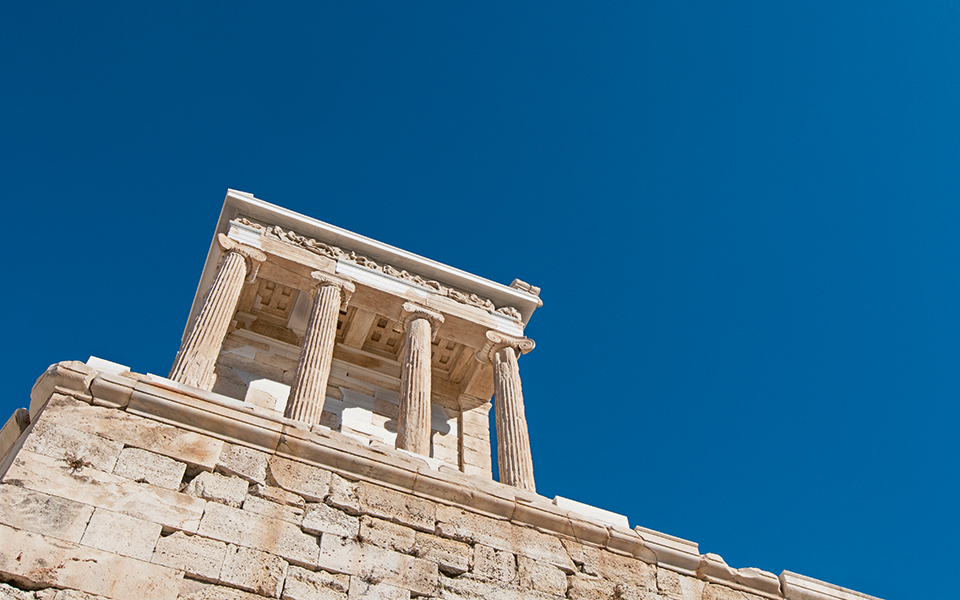
A DIMINUTIVE IONIC JEWEL
Thus has been described the Temple of Athena Nike, also known as the Temple of Wingless Victory, which is distinguished by its harmonious proportions and symmetry. Although planned already from 449 BC, it was constructed between 427 and 423 BC—in the midst of the Peloponnesian War—probably in time to glorify the triumph of the Athenians over the Spartans at Sphaktiria (425 BC).
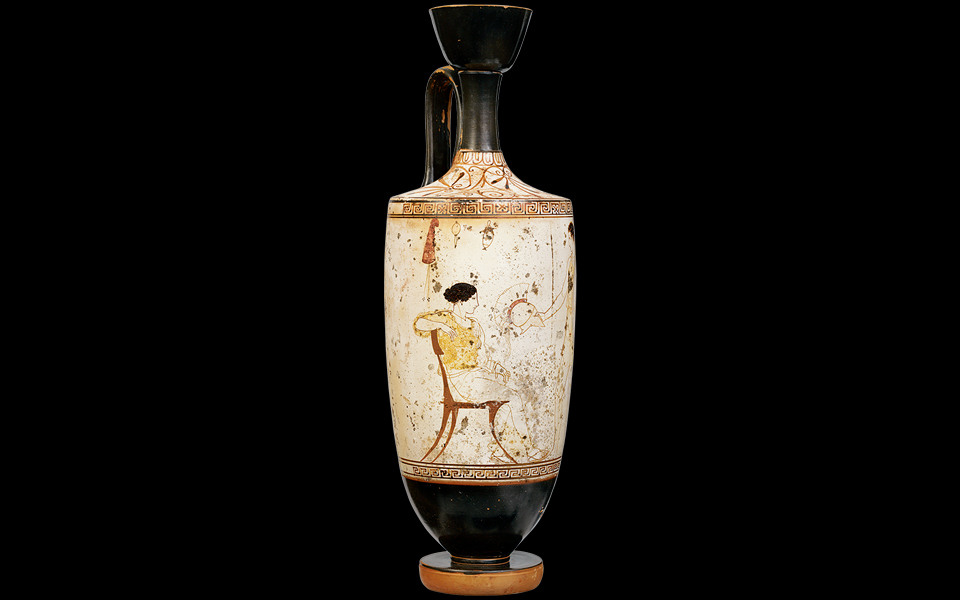
THE PAIN OF FAREWELL
An Attic white-ground lekythos from Eretria. In its painted figural scene, a seated Athenian noblewoman bids farewell to her husband as he departs for war. A work of the Achilles Painter (ca. 440 BC, National Archaeological Museum). High-fashion white-ground lekythoi were hallmark funerary vases of the 5th century BC, found in many tombs. They were characteristically decorated with depictions of deceased persons or other figures, such as Hermes Psychopompos (escort of souls), painted on a white background.
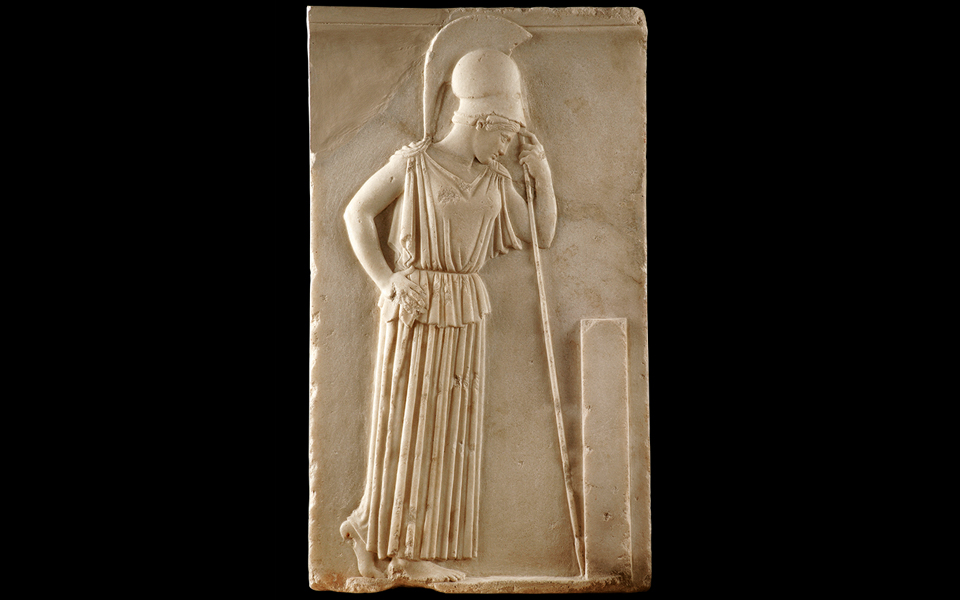
RENDERING OF EMOTION
The “Pensive Athena,” a masterful example of votive relief, depicting the goddess in a posture of meditation. Athens’ protectress wears a Doric peplos and a Corinthian helmet and leans on her spear. The subtly evocative portrayal of her inner mood by the work’s Classical-era sculptor is considered unique (circa 460 BC, Acr. 1332)
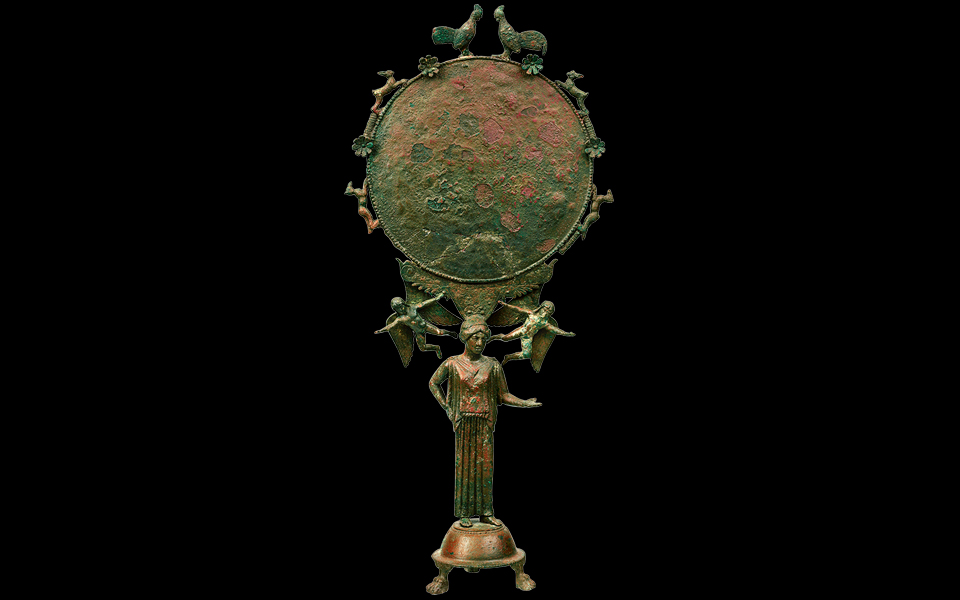
A REFLECTION OF BEAUTY
Bronze mirror of the Classical era (ca. 455 BC, National Archaeological Museum). The handle takes the form of a peplos-attired kore (maiden), who rests on a circular pedestal with three legs. Above her head soar two winged Eros figures. The object’s disk was once highly polished, so as to give its surface the reflective properties of a mirror. Mirrors were a symbol of the goddess Aphrodite, who was associated with beauty and often depicted with a mirror in her hand.
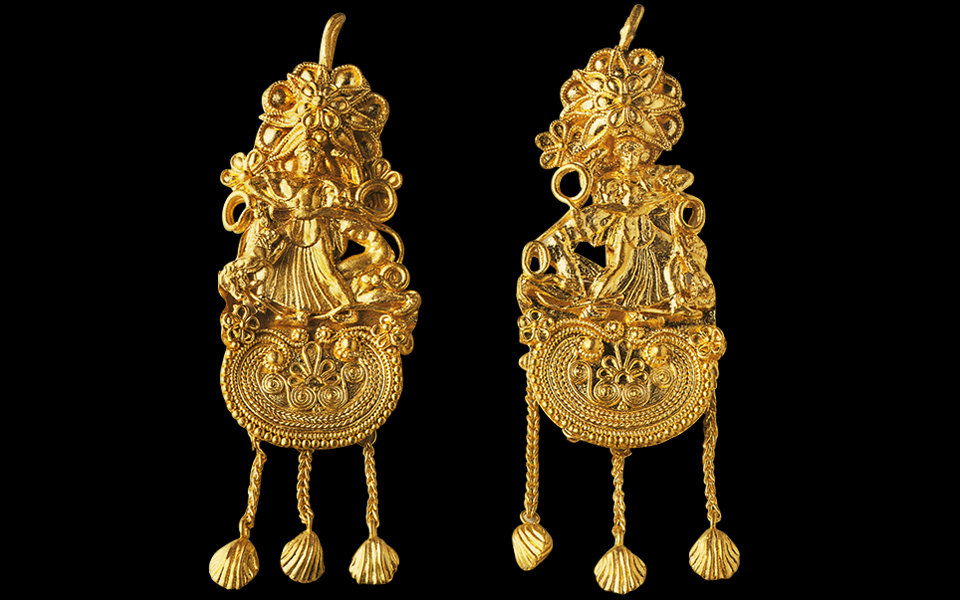
FEMININE ELEGANCE
Elaborate gold earrings from Eretria. Their central motif is comprised of a writhing female figure which a man is trying to seize. The lion and snakes in front of the woman point to her identity as Thetis, who successively transformed herself into fire, a lion, a snake and water to avoid the erotic pursuits of Peleus (second quarter of the 5th century BC).
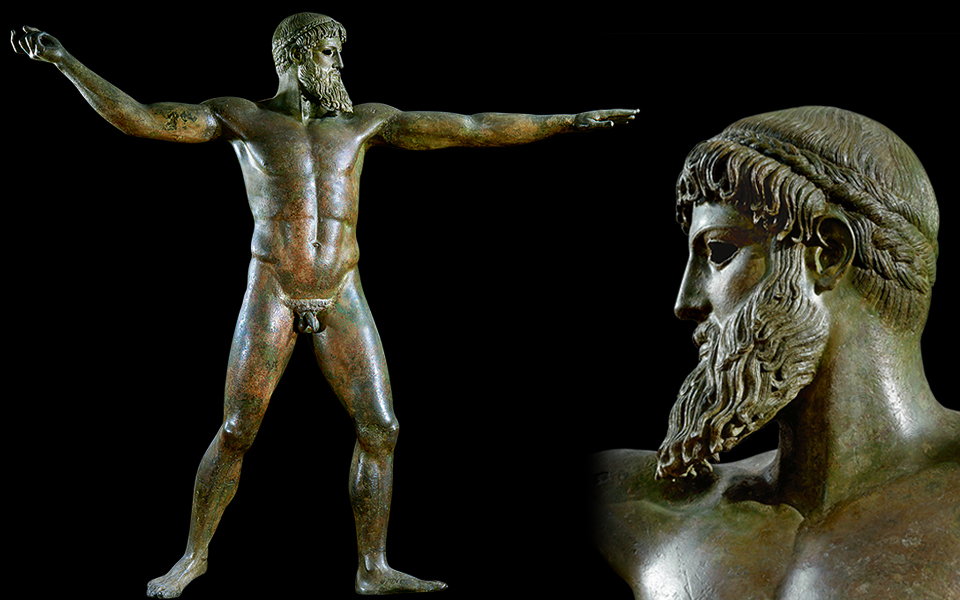
DIVINE MAGNIFICENCE
Bronze statue, discovered on the seabed near Evia Island’s Cape Artemision, which likely represents Zeus rather than Poseidon (as initially proposed). The father of the gods and men, in all of his magnificence, is represented nude, with a singular vitality, as he stretches forward his left hand and with the right prepares to hurl a thunder bolt (ca. 460 BC)
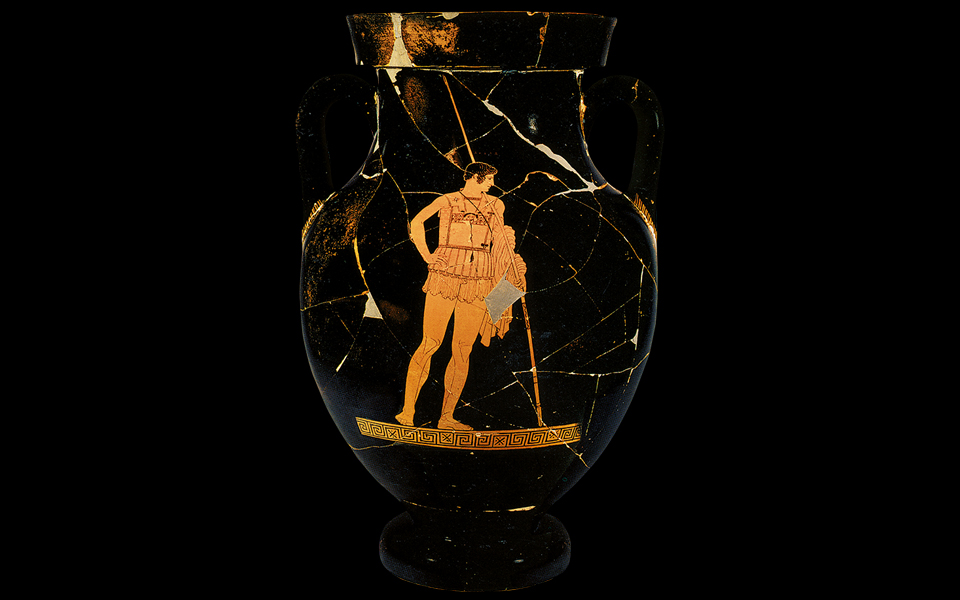
HERO
Attic red-figured amphora, on which is depicted Achilles, the mythical hero of Homer’s Iliad (ca. 450 BC, Gregorian Etruscan Museum, Rome). This vase typifies the works of the distinguished artist known as the Achilles Painter, who was active in the period 470/460-435/430 BC.
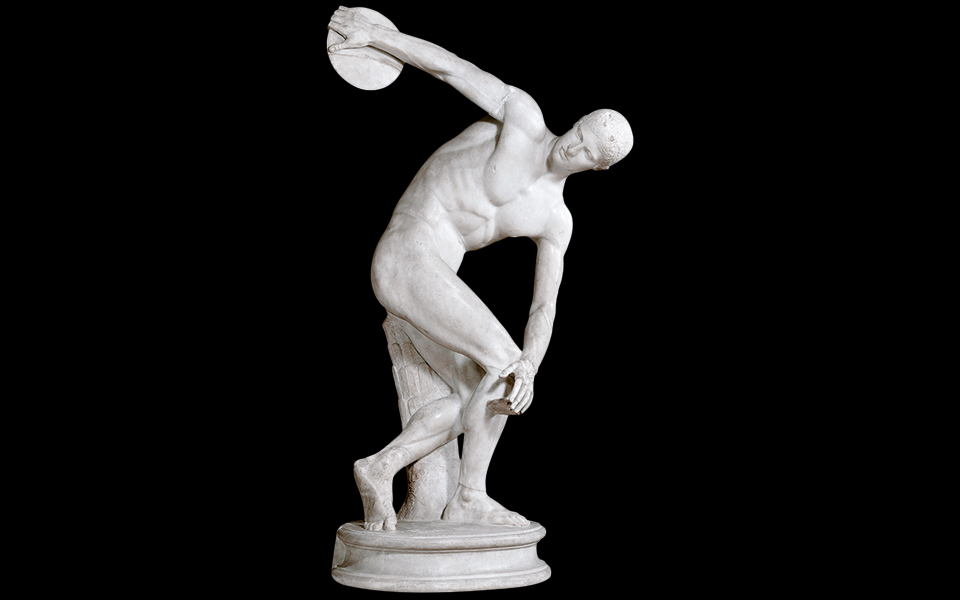
PERFECT FORM
The Diskobolus (Discus Thrower), Myron’s preeminent bronze statue created around 450 BC, depicts an athlete with great artistic naturalness, just as he prepares to hurl the discus. Characteristic of the work is the combination between the tension in the well-proportioned, highly trained body and the serene introspection of the face. This is one of many Roman copies of the work, exhibited in the National Museum of Rome (found in the Baths of Diocletian); another copy stands in London’s British Museum, as well near the Panathenaic Stadium.
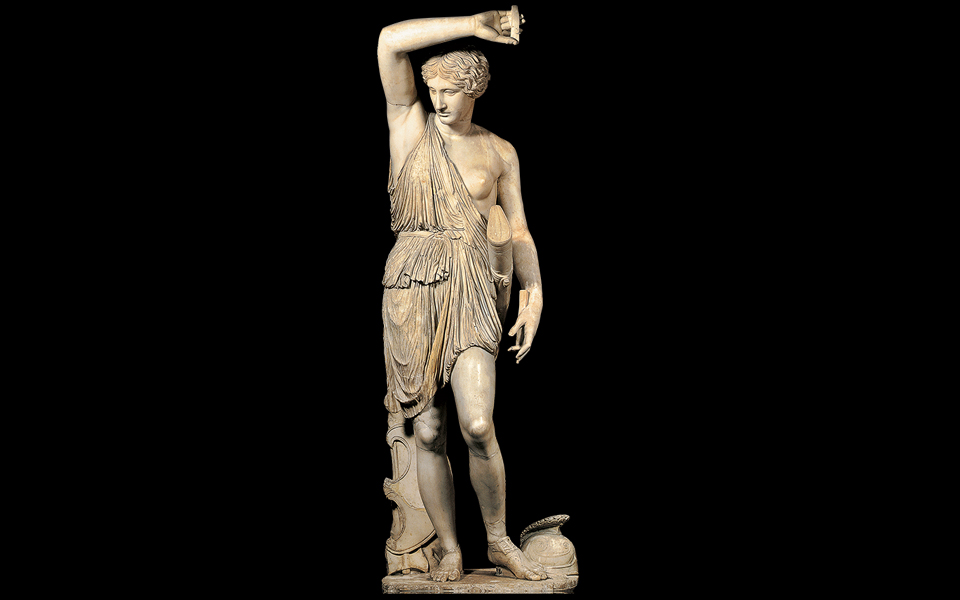
A COMPETITION AMONG GREATS
In the 5th century BC, Ephesus announced a competition for the creation of an Amazon statue, which would serve as an offering in the Temple of Artemis. The competition called for famous sculptors of the era (Pheidias, Polykleitos, Kresilas and Phradmon) each to submit a bronze statue. Ultimately the winner was Polykleitos. Copies of the original works from the period 440-430 BC were produced during the Roman era and today are displayed in various Italian museums. One of them, the so-called Wounded Amazon (Amazon Mattei type) is exhibited in the Vatican’s Pius-Clementine Museum and believed to be a copy of an original work by Pheidias.
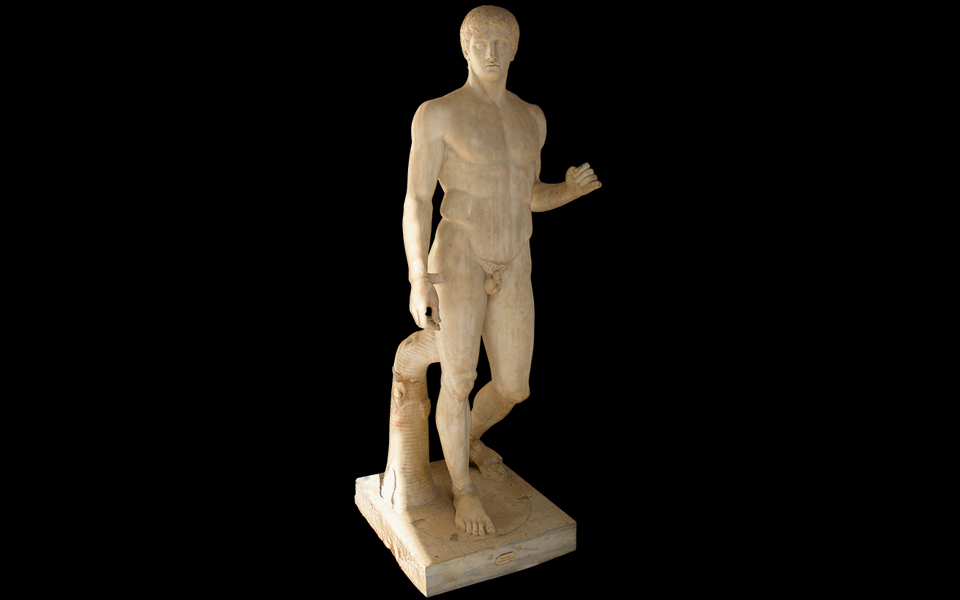
THE RULE
The “Spear-Bearer” by Polykleitos (ca. 440 BC), a work that reflects harmony in its proportions of the human body and attests to its creator’s absolute knowledge of anatomy, was considered in antiquity as the ideal model for sculpture and male beauty, and thus it became known as “The Canon,” or the rule. The composition is most notable for its dynamic expression of the human body and its balance of contrasts: the right hand is relaxed over the leg that supports the figure’s weight, while the left hand supporting the spear is held above the loose leg. One of the most faithful later copies of Polykleitos’ original bronze work is exhibited in the National Archaeological Museum in Naples.
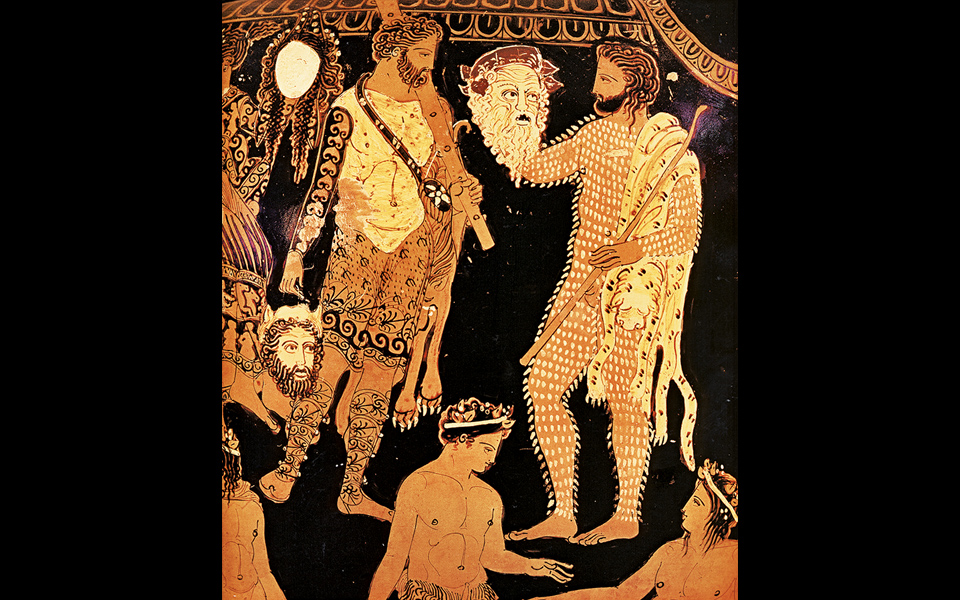
THE BLOSSOMING OF THEATER
Playwrights in all three genres (drama, satirical drama, comedy) produced crowning, timeless theatrical works during the years of ancient democracy which served to showcase Athenian values. In the photo, two actors backstage with their masks and costumes during a satyric drama. Detail of an Attic red-figure krater attributed to the Pronomos Painter (late 5th century BC, National Archaeological Museum, Naples).









